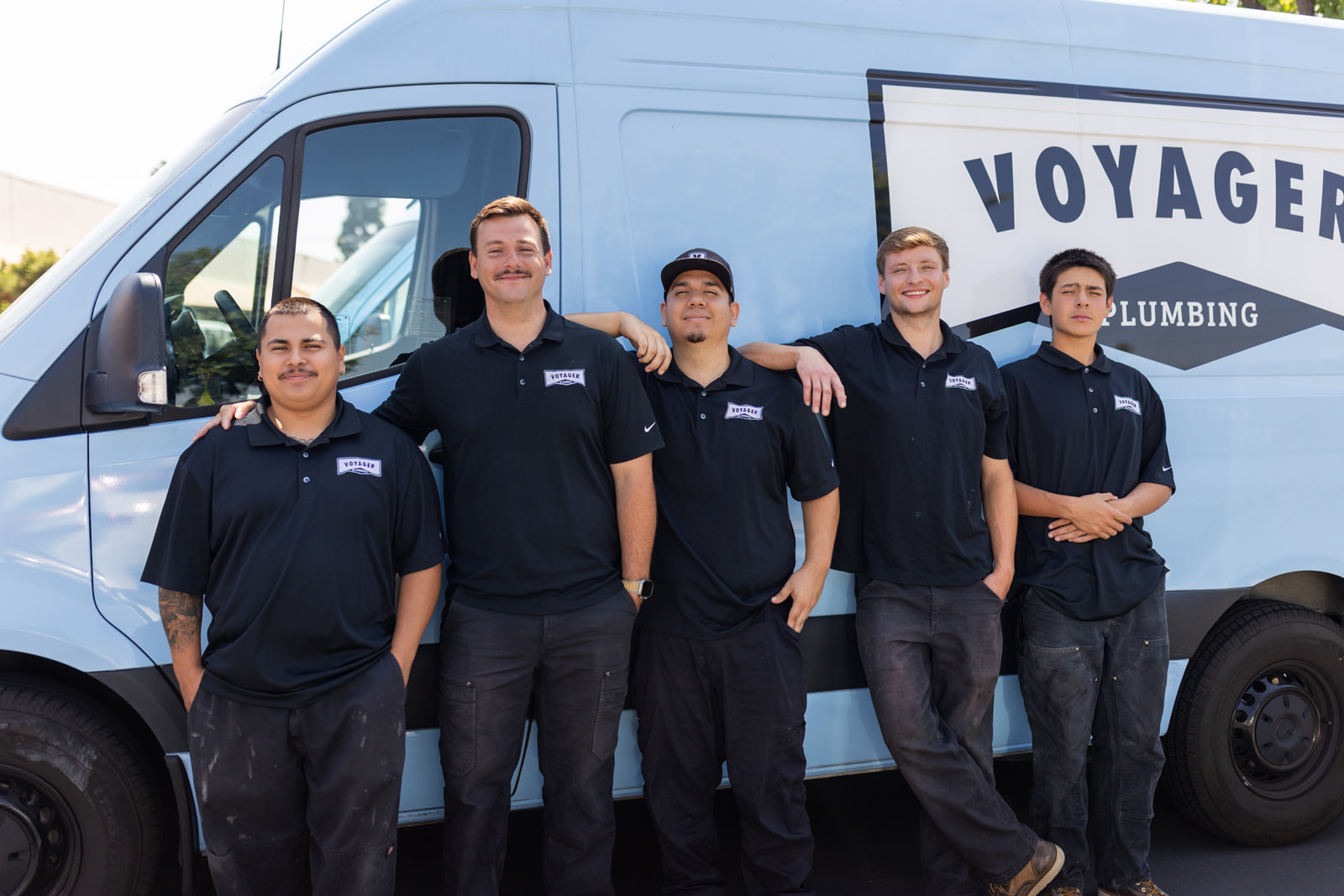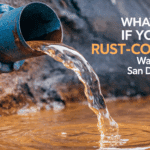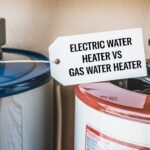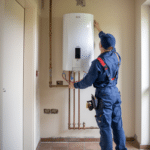
Table of Contents
- Key Takeaways
- What Water Pressure Does in Your Home
- What Low Pressure Looks Like in the Bathroom
- How High Pressure Damages Bathroom Fixtures
- Pressure Challenges in El Cajon Homes
- Fixture-by-Fixture Breakdown
- Steps to Prevent Damage and Improve Water Pressure
- Know When to Call for Help
- Keep Your Bathroom Fixtures Working Right
If your bathroom sink barely trickles, your shower isn’t as strong as it used to be, or your toilet seems slow to refill, water pressure could be the reason. Many homes in El Cajon experience pressure-related plumbing issues that often start in the bathroom. These problems may develop slowly but can lead to costly repairs if ignored.
At Voyager Plumbing, we help El Cajon homeowners understand and fix water pressure issues before they cause lasting damage. If something feels off with your fixtures, contact us today to schedule a pressure inspection or plumbing evaluation.
Key Takeaways
- El Cajon homes commonly deal with hard water and aging pipes, which can affect water pressure and damage bathroom fixtures over time.
- Low pressure leads to weak flushing, poor rinsing, and inconsistent faucet flow, while high pressure can cause leaks, worn valves, and pipe stress.
- Pressure over 80 PSI requires a regulating valve by California code.
- Regular plumbing inspections, pressure checks, and fixture upgrades can help extend the life of your bathroom plumbing.
What Water Pressure Does in Your Home
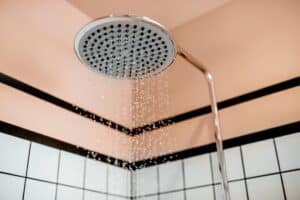 Water pressure is the force that moves water through your pipes and out of your faucets, showers, and toilets. Most homes in El Cajon operate between 40 to 80 PSI (pounds per square inch), which is the standard range for residential plumbing.
Water pressure is the force that moves water through your pipes and out of your faucets, showers, and toilets. Most homes in El Cajon operate between 40 to 80 PSI (pounds per square inch), which is the standard range for residential plumbing.
If pressure drops below 40 PSI, fixtures may not function properly. If it exceeds 80 PSI, plumbing code requires the use of a pressure-regulating device to protect your system. The effects of low or high pressure are often felt most in the bathroom, where water usage is constant and varied.
What Low Pressure Looks Like in the Bathroom
Low pressure is often caused by buildup inside pipes, aging materials, or supply issues. In El Cajon, hard water is a known contributor, leaving behind mineral deposits that narrow pipes and limit water flow.
Here’s how low pressure tends to show up:
Showers
- Weak spray that slows rinsing
- Temperature fluctuations
- Reduced flow during high-demand periods
Toilets
- Slow tank refills
- Weak flushes that don’t fully clear the bowl
- Repeated flushes needed
Faucets
- Slow flow even with handles turned fully
- Inconsistent or sputtering streams
- Whistling sounds as water flows
These symptoms may seem minor, but they often point to underlying problems such as partial clogs or pipe corrosion.
How High Pressure Damages Bathroom Fixtures
It’s easy to assume high pressure is better, especially when taking a shower. But when water pressure rises above 80 PSI, it increases stress on plumbing components and shortens the life of your fixtures.
In fact, California plumbing regulations require a pressure-reducing valve in homes with pressure that exceeds this limit.
Here’s what high pressure can do:
Showers
- Leaks at valve connections or around handles
- Damage to internal cartridges and seals
- Strain on pipes behind the walls
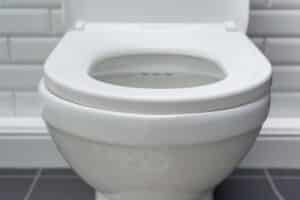 Toilets
Toilets
- Fast, noisy tank refills
- Worn or damaged fill valves and flappers
- Water hammer or banging pipes after flushing
Sinks
- Faucet drips caused by damaged washers
- Too much force from the stream
- Increased water waste over time
Even if water flows freely, high pressure may lead to wear that causes leaks, noisy pipes, or fixture breakdowns sooner than expected.
Pressure Challenges in El Cajon Homes
Several factors affect pressure in El Cajon homes:
- Very Hard Water: With mineral levels around 166 mg/L, El Cajon falls into the “very hard water” category. These minerals create scale buildup in pipes and fixtures.
- Aging Plumbing: Many homes still rely on older materials like galvanized steel, which corrode over time and restrict flow.
- Shared Water Lines: In multi-family residences or older neighborhoods, shared main lines may cause noticeable drops or spikes in pressure depending on surrounding usage.
- Municipal Maintenance: Water main repairs or flushing by the city can temporarily affect pressure throughout the neighborhood.
These issues may not cause instant damage, but over time they impact how your bathroom functions.
Fixture-by-Fixture Breakdown
Each bathroom fixture is built to handle a controlled water pressure range. When pressure goes too high or too low, even quality products start showing signs of wear.
- Toilets: Low pressure causes slow, weak flushes and delayed tank refills. High pressure wears out internal tank parts and leads to constant running or leaking.
- Showers: Weak pressure affects rinsing and comfort. High pressure can damage internal valve parts and lead to leaks behind the wall, which may not be visible until the damage worsens.
- Faucets: Mineral buildup causes flow issues and noise. High pressure damages internal seals and leads to drips, leaks, and water waste.
Steps to Prevent Damage and Improve Water Pressure
There are ways to manage water pressure and protect your fixtures—some of which can be done proactively before major problems appear:
- Install a Pressure-Reducing Valve (PRV): If your home lacks one—or if yours is outdated—a plumber can install or replace it to control incoming water pressure.
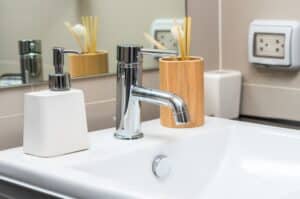 Flush Your Water Heater Once a Year: Sediment from El Cajon’s hard water builds up in water heaters and affects flow. Flushing it helps maintain steady pressure.
Flush Your Water Heater Once a Year: Sediment from El Cajon’s hard water builds up in water heaters and affects flow. Flushing it helps maintain steady pressure.- Upgrade Outdated Fixtures: Newer fixtures are built to work efficiently with lower flow. Replacing older faucets or showerheads can immediately improve water use and comfort.
- Install Water Hammer Arrestors: If you hear banging when shutting off water, these devices absorb shock and reduce the risk of pipe damage. Keep in mind, persistent banging may still require a plumbing inspection.
- Schedule a Plumbing Assessment: Have a licensed plumber test your home’s water pressure and inspect your plumbing. Early action can prevent unnecessary wear and hidden leaks.
Know When to Call for Help
If you’ve noticed slow refills, weak shower flow, or unexplained drips, pressure may be the issue. These are more than minor annoyances—they’re often early signs of a bigger problem.
Whether your plumbing system is a few years old or has seen decades of use, it’s a good idea to have the water pressure tested and the fixtures inspected. Identifying and addressing pressure issues early can prevent further wear, reduce water waste, and keep your bathroom functioning properly.
Keep Your Bathroom Fixtures Working Right
Water pressure affects your daily routine more than most people realize. From how your toilet flushes to how your shower feels, your fixtures rely on consistent pressure to work properly and last longer.
If pressure problems are starting to show up—or you want to avoid them altogether—Voyager Plumbing’s expert plumbers in El Cajon can help.
Call us today to keep your bathroom comfortable, efficient, and free from pressure-related problems.
